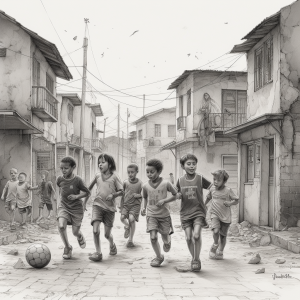Soccer performance these days depends upon a wide range of factors such as skill level, teamwork, nutrition and psychology. But the most important factor and the one that separates the elite from the rest of the world is soccer conditioning. We talked about how modern players are bigger, stronger and fitter and how this is accomplished through scientific based conditioning methods. Soccer fitness requires the development of speed, strength, power, agility and endurance.
So how do we incorporate all these areas into one program? To be able to answer this we must first understand the physical demands and requirements of the game. Also the conditioning program needs to take positional differences into consideration. Different players and different positions have different requirements to fulfill. The conditioning program needs to be adjusted and modified for each individual and their respective playing position.
Lets be honest with each other, soccer is a high intensity sport. The game lasts approximately 90 minutes with only one break of play in the middle. Soccer involves alot of movement patterns such as sprinting, jogging, walking, kicking, throwing and running backwards. Not to mention the need to suddenly change direction, jump or even slide across the field.
Scientific research analysed the movement patterns of soccer players and have concluded this
- Change in activity occurs on average every 6-7 seconds with short rests. This simply means that you might sprint or chase the ball for a period of 6-7 seconds, the ball goes out of play, you obviously stop and rest, then start jogging back to your position. The movement patterns here are Sprint-Rest-Jog and so on. Through research they are predicting on average that this cylcle has 6-7 second intervals.
- Research has estimated that a soccer player spends 25% of the match walking
- 37% jogging
- 20% is a light jog
- 11% sprinting
- and 7% spent running or jogging backwards.
On average (information is based on research) a player covers 8-12 kilometres per match. The distance covered is composed of 5-10 metre runs and less than 2% of the distance covered is with the ball. A players work capacity is on average 75-85% of maximum heart rate. The high intensity of soccer needs to be replicated during training and needs to provide the player with similar work rates and patterns.
So now that we’ve established and investigated the motion aspect of the game, we need to look into the movement patterns. The movements in soccer require high levels of coordinated strength and power from muscles in the lower parts of the body, predominantly your legs. Extensions of the hip, knee and ankle is vital as it contributes to sprinting, accelerating, jumping and changing directions.
Soccer conditioning when you break it down into categories becomes quite complex. You need to be able to develop each parameter as a whole and make sure that the development meets the requirements of soccer. This category of Fitness and Conditioning will be used to identify and provide coaches and players with the tools to create scientific training programs that will meet the requirements of the game.
Stay tuned.



Let’s make sure that someone does not think that it is better for them to be fit than be good. Soccer conditioning enhances your soccer experience. When two players are good, conditioning becomes the separator. Soccer conditioning does not separate good players from bad players. It only separates a fit player from not fit players. So if you are on the path of development, make sure you don’t use conditioning to replace getting better.